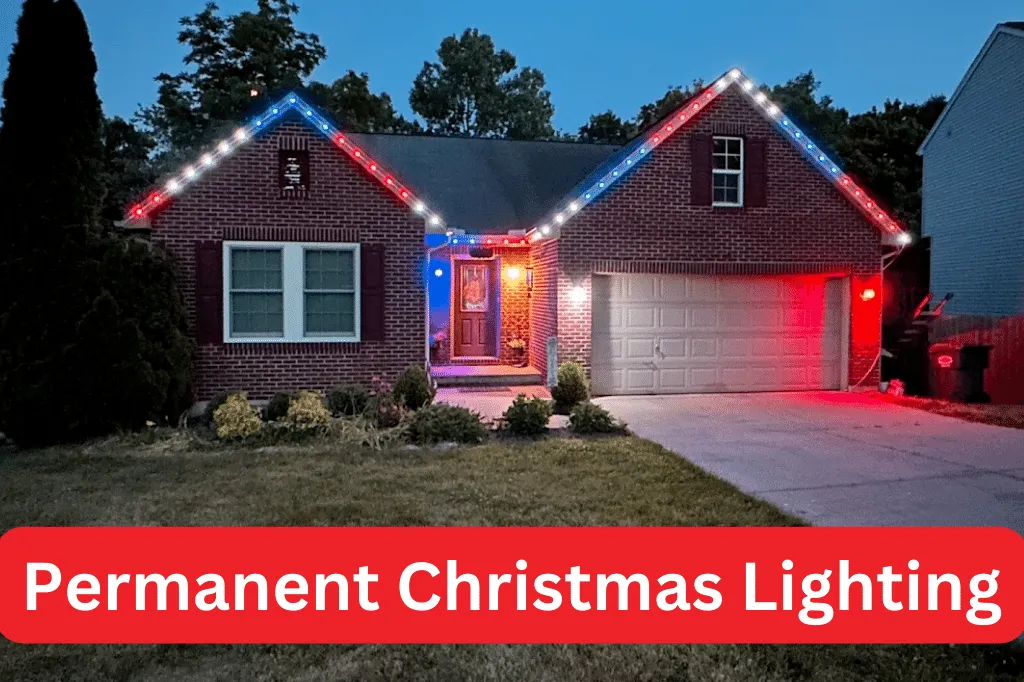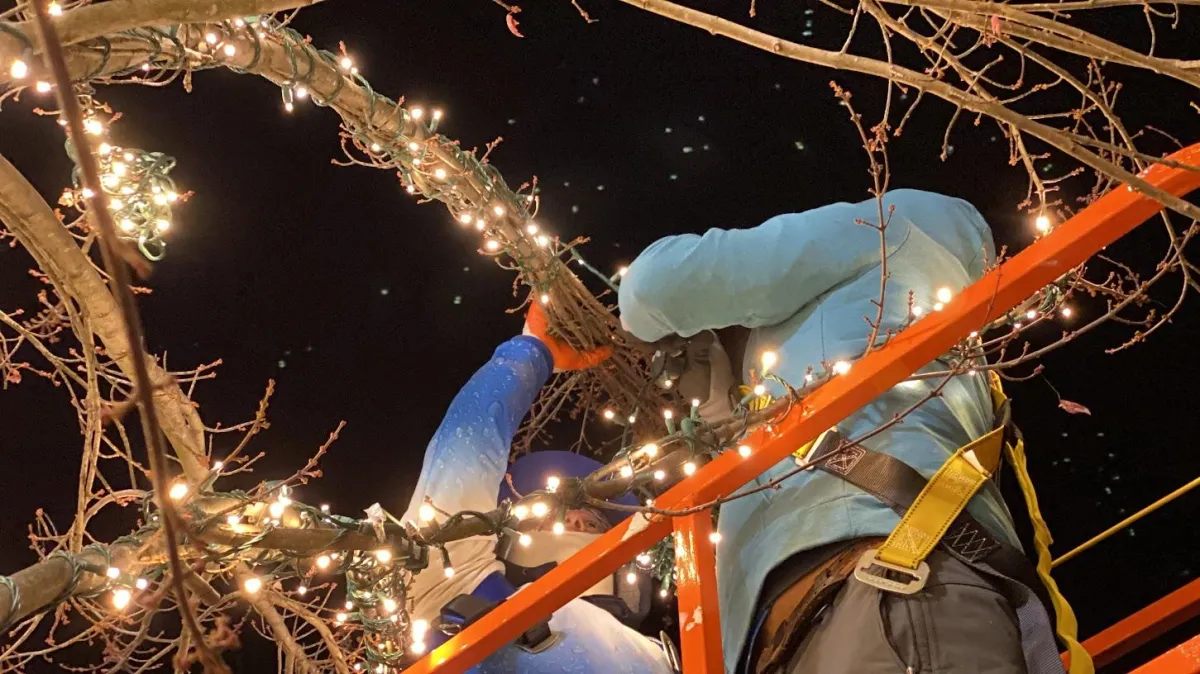All The Lights, Wire, Plugs, Garland, And Wreaths You Need To Build A Successful Christmas Lights Business
Premium Wholesale Christmas Lights supplies for Professional-Grade Installations
Your One-Stop Shop for Exceptional Christmas Lighting Solutions
Welcome to the ultimate resource for all your Christmas lights installation needs!
We understand the importance of quality, durability, and variety when it comes to building a successful Christmas lights installation business. That's why we offer an extensive selection of everything you need to illuminate the holiday season with brilliance and style.
All Christmas Lights Supplies
Professional-grade Christmas light supplies at unbeatable wholesale prices. Our premium holiday lighting solutions are specifically designed to meet the needs of professional installers, offering the highest quality and durability for stunning and reliable Christmas light displays.
EASY Starter Packages
Kickstart your holiday lighting business with our all-inclusive Christmas lights starter packages. These packages include everything you need, from bulbs and clips to socket wires and extension cords, ensuring you're fully prepared to begin your lighting installations from day one.
Discover Expert Tips on Our Blog

Fa La La Fabulous: Tips and Tricks for Selecting the Ideal Colors for Your Outdoor Christmas Lights
As a professional Christmas light installer, one of the most important aspects of creating a stunning holiday display is choosing the right color scheme. The colors you select can dramatically impact the overall look and feel of a home's exterior during the festive season. In this comprehensive guide, we'll explore the art and science of selecting the perfect color combinations for outdoor Christmas light displays, helping you create magical and memorable installations for your clients.
Understanding the Basics of Color Theory
Before diving into specific color schemes, it's essential to have a solid grasp of color theory. This knowledge will help you make informed decisions and create harmonious displays that truly impress your clients.
The color wheel is a fundamental tool in understanding color relationships. It consists of primary colors (red, blue, and yellow), secondary colors (green, orange, and purple), and tertiary colors (yellow-green, blue-green, blue-purple, red-purple, red-orange, and yellow-orange).

Colors can be categorized as warm (reds, oranges, and yellows) or cool (blues, greens, and purples). Warm colors tend to evoke feelings of coziness and excitement, while cool colors are often associated with calmness and serenity.
When it comes to creating color schemes, there are several classic approaches:
- Complementary: Using colors opposite each other on the color wheel (e.g., red and green)
- Analogous: Using colors adjacent to each other on the color wheel (e.g., blue, blue-green, and green)
- Monochromatic: Using various shades and tints of a single color
Understanding these basic principles will help you create more intentional and visually appealing Christmas light displays.
Factors to Consider When Choosing a Color Scheme
When selecting a color scheme for your clients' outdoor Christmas light displays, there are several important factors to consider:
1. Home's exterior colors and style: The existing colors and architectural style of the home should inform your color choices. For example, a modern home with a neutral exterior might benefit from a sleek, monochromatic display, while a traditional home could look stunning with a classic red and green scheme.
2. Neighborhood aesthetic and HOA guidelines: Be aware of any homeowners' association rules regarding holiday decorations, and consider the overall look of the neighborhood to ensure your display complements rather than clashes with the surroundings.
3. Desired mood and atmosphere: Different color schemes can evoke different emotions. Discuss with your clients what kind of atmosphere they want to create – festive and energetic, calm and elegant, or somewhere in between.
4. Personal preferences and decorating style: Take into account your clients' personal tastes and any existing holiday decorations they plan to use alongside the lights.

Popular Christmas Light Color Schemes
While there's no one-size-fits-all approach to Christmas light colors, certain schemes have stood the test of time and remain popular choices:
1. Classic red and green: This traditional color combination instantly evokes the Christmas spirit and works well with many home styles.
2. Elegant white and gold: For a sophisticated look, combine warm white lights with gold accents. This scheme is particularly effective on homes with neutral exteriors.
3. Cool blue and white: Create a winter wonderland feel with a combination of blue and white lights. This scheme works well for homes in cooler climates or those with modern exteriors.
4. Festive multi-color: For a playful and energetic display, use a variety of colors. This scheme can be particularly appealing for families with young children.
5. Monochromatic schemes: Using variations of a single color, such as different shades of blue or warm white, can create a cohesive and elegant look.
Tips for Incorporating Multiple Colors
When working with multiple colors in a display, consider the following tips:
1. Choose a dominant color: Select one main color to serve as the foundation of your display, then use other colors as accents.
2. Use the 60-30-10 rule: This interior design principle can be applied to light displays as well. Use your dominant color for about 60% of the display, a secondary color for 30%, and an accent color for the remaining 10%.
3. Repeat colors throughout the display: Create a sense of cohesion by repeating colors in different areas of the home's exterior.
4. Gradually transition between colors: If you're using multiple colors, try to create smooth transitions rather than abrupt changes.

Specialty Lighting Options
In addition to traditional string lights, consider incorporating specialty lighting options to add depth and interest to your displays:
1. Icicle lights: These can create a magical, wintry effect along rooflines and eaves.
2. Net lights: Perfect for quickly and evenly covering bushes and shrubs.
3. Rope lights: Ideal for outlining architectural features or creating custom shapes and designs.
4. Projector lights: These can add dynamic, moving elements to a display without the need for complex installations.
Coordinating with Other Decorations
For a truly cohesive look, consider how the Christmas lights will interact with other decorations:
1. Match light colors to wreaths, garlands, and ribbons for a coordinated appearance.
2. Use colored ornaments in outdoor trees and planters to complement the light display.
3. Incorporate colored yard décor, such as illuminated reindeer or candy canes, that align with your chosen color scheme.
4. Create a connection between outdoor and indoor decorations by using similar color schemes for both.

Lighting Techniques for Different Areas of the Home
Different areas of a home's exterior may require different lighting approaches:
1. Roofline and gutter lighting: Use evenly spaced lights to highlight the home's silhouette. C9 bulbs are often a good choice for this area.
2. Window and door frame lighting: Outline these features with smaller lights, such as mini lights or LED icicle lights.
3. Column and post wrap lighting: Spiral lights around columns and posts for a festive effect.
4. Tree and shrub lighting: Use net lights or strategically placed string lights to illuminate landscaping.
5. Walkway and driveway lighting: Consider using stake lights or rope lights to guide visitors safely to the entrance.
Energy Efficiency and Maintenance
As a professional installer, it's important to consider the long-term efficiency and maintenance of your light displays:

1. Choose LED lights: These use significantly less energy than traditional incandescent bulbs and have a much longer lifespan.
2. Use timers and smart plugs: Help your clients save energy by setting up automatic on/off schedules for their displays.
3. Proper storage and organization: Advise your clients on the best ways to store their lights to prevent damage and tangling.
4. Regular inspection and maintenance: Offer a service to check and replace any damaged bulbs or cords throughout the holiday season.
Choosing the right color scheme for outdoor Christmas light displays is both an art and a science. By understanding color theory, considering important factors like home style and client preferences, and implementing creative lighting techniques, you can create stunning displays that will delight your clients and their neighbors alike.
Remember, there's no one "perfect" color scheme – the best choice will depend on the specific circumstances of each project. Don't be afraid to experiment with different combinations and techniques to find what works best for each unique situation.
As a professional Christmas light installer, your expertise in creating beautiful, harmonious displays will bring joy and festivity to homes throughout the holiday season. By mastering the art of color selection and implementation, you'll set yourself apart in the industry and create magical experiences for your clients year after year.

1. Q: What are the basic color schemes used in Christmas light displays?
A: The basic color schemes include complementary (opposite colors on the color wheel), analogous (adjacent colors), and monochromatic (various shades of one color).
2. Q: How does a home's exterior color affect the choice of Christmas light colors?
A: The home's exterior colors should inform your light color choices to ensure a harmonious look. For example, a neutral exterior might pair well with a monochromatic display.
3. Q: What is the 60-30-10 rule in Christmas light color schemes?
A: The 60-30-10 rule suggests using 60% of your dominant color, 30% of a secondary color, and 10% of an accent color in your display.
4. Q: How can I create a cohesive look with multiple colors?
A: To create a cohesive look with multiple colors, choose a dominant color, repeat colors throughout the display, and create gradual transitions between different hues.
5. Q: What are some popular Christmas light color schemes?
A: Popular schemes include classic red and green, elegant white and gold, cool blue and white, festive multi-color, and monochromatic designs.

6. Q: How can I incorporate specialty lighting options into a display?
A: Specialty lighting options like icicle lights, net lights, rope lights, and projector lights can add depth and interest to your display when used strategically.
7. Q: Why is it important to consider energy efficiency in Christmas light displays?
A: Energy-efficient options like LED lights can significantly reduce power consumption and costs, while also lasting longer than traditional incandescent bulbs.
8. Q: How can I ensure my light display complements other outdoor decorations?
A: Coordinate your light colors with other decorations like wreaths, garlands, and yard décor to create a cohesive overall look.
9. Q: What factors should I consider when choosing a color scheme for a client?
A: Consider the home's style, neighborhood aesthetic, HOA guidelines, desired mood, and the client's personal preferences when choosing a color scheme.
10. Q: How can different areas of a home be lit effectively?
A: Different areas require different approaches: use evenly spaced lights for rooflines, outline windows and doors with smaller lights, wrap columns and posts, and use net lights for trees and shrubs.

Frequently Asked Questions
What are the essential supplies needed for Christmas light installation?
The basics include bulbs (like C9 or C7), socket wire, clips, plugs, extension wires, and optionally, timers. Check out the Christmas lights starter packages to get everything you need to start.
How do I choose the right type of Christmas light bulb?
Consider the desired look and location. C9 bulbs are larger and often used for outdoor displays, while mini lights are great for trees and bushes.

What is the difference between commercial-grade and residential-grade Christmas lights?
Commercial-grade Christmas lights are designed for heavy-duty use and can withstand harsher conditions than residential-grade lights. They are also typically brighter and more durable.
What are the different types of commercial-grade Christmas lights?
The most common types of commercial-grade Christmas lights are LED, C7, C9, mini, and solar lights.
What are the benefits of using commercial-grade Christmas lights?
Commercial-grade Christmas lights are more durable, brighter, and more energy-efficient than residential-grade lights. They are also more versatile and can be used to create a variety of different looks.
What are the drawbacks of using commercial-grade Christmas lights?
Commercial-grade Christmas lights can be more expensive than residential-grade lights. They may also be more difficult to find.
How do I choose the right type of commercial-grade Christmas lights for my needs?
When choosing commercial-grade Christmas lights, consider the following factors:
Durability: If you are using the lights for a large or outdoor display, you will need to choose lights that are durable and can withstand harsh weather conditions.
Brightness: If you need the lights to be seen from a distance, you will need to choose lights that are bright.
Energy efficiency: If you are using the lights for a long period of time, you will want to choose lights that are energy-efficient.
Versatility: If you want to be able to create a variety of different looks, you will need to choose lights that are versatile.
Cost: Commercial-grade Christmas lights can be more expensive than residential-grade lights. Set a budget before you start shopping.
Where can I buy commercial-grade Christmas lights?
Commercial-grade Christmas lights can be purchased online, at specialty lighting stores, and at some home improvement stores. Best prices are above to buy lights
How do I install commercial-grade Christmas lights?
To test commercial-grade Christmas lights before you install them, simply plug them in and turn them on. If any of the lights do not work, replace them before you put up your display.
How do I store commercial-grade Christmas lights properly?
When you are finished with your commercial-grade Christmas lights, be sure to store them properly in a cool, dry place. This will help to extend the life of your lights.
What is the average lifespan of commercial-grade Christmas lights?
The average lifespan of commercial-grade Christmas lights is 5-10 years. However, this can vary depending on the type of light and how well it is cared for.
How do I troubleshoot commercial-grade Christmas lights?
If you are having problems with your commercial-grade Christmas lights, the first thing you should do is check the wiring. Make sure that all of the connections are secure and that there are no frayed or damaged wires. If the wiring is in good condition, the next thing you should do is check the light bulbs. Replace any bulbs that are burned out.
What is the warranty on commercial-grade Christmas lights?
The warranty on commercial-grade Christmas lights varies depending on the manufacturer. Be sure to read the warranty information before you purchase your lights.
What are the safety precautions to take when using commercial-grade Christmas lights?
When using commercial-grade Christmas lights, it is important to take the following safety precautions:
Always use proper wiring.
Secure your lights to the ground or structure.
Do not overload your electrical circuits.
Be careful when using ladders or other elevated surfaces.
Copyright ©2025 All Right Reserved website designed by christmaslights.io
Terms of Service / Privacy Policy
Have questions or need assistance?
Contact us at (855)619-LITE
















